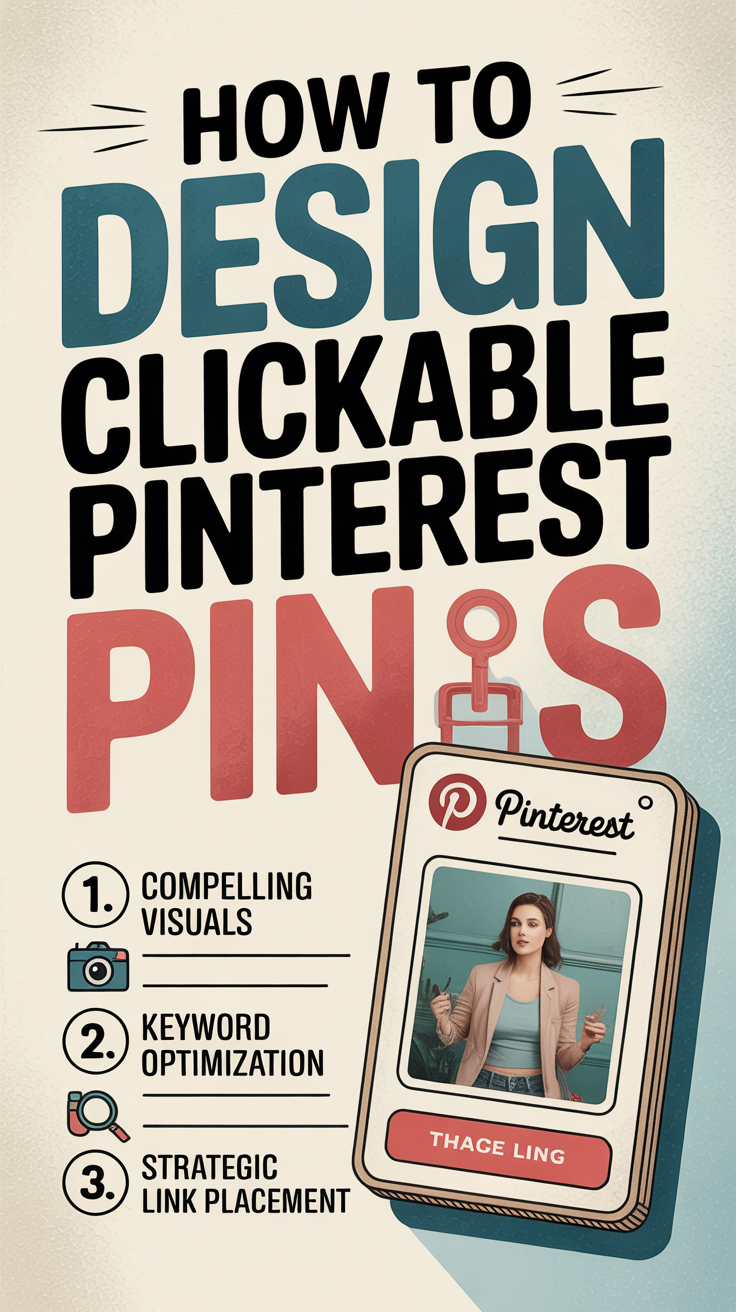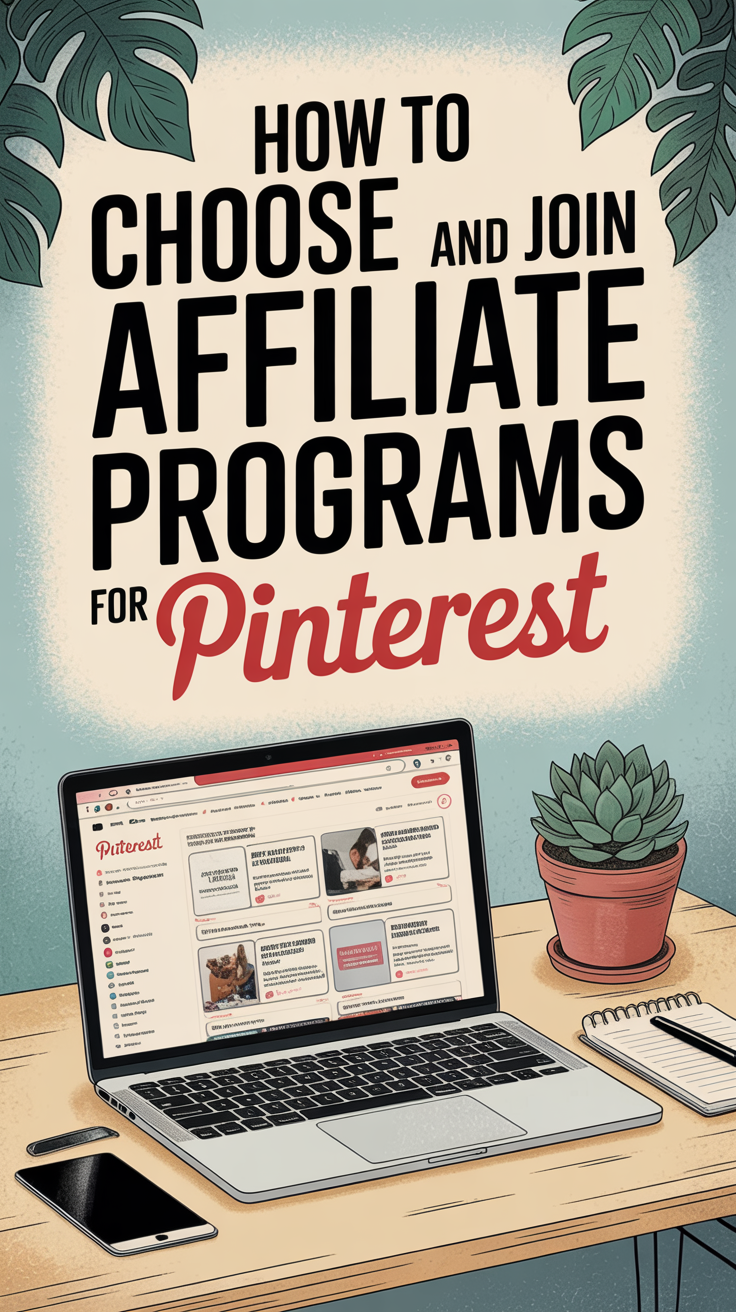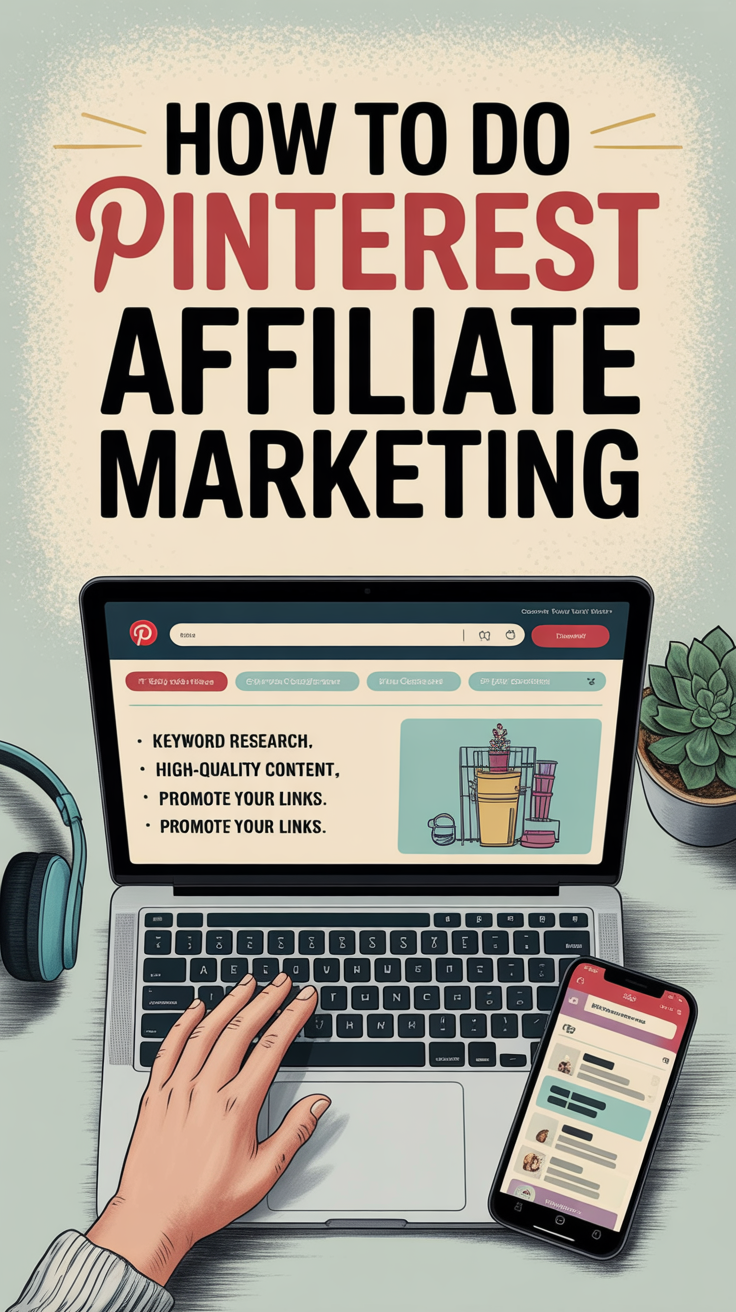This website contains affiliate links. Some products are gifted by the brand. As an Amazon Associate, I earn from qualifying purchases. The content on this website was created with the help of AI.
While I share money-making strategies, nothing is “typical”, and outcomes are based on each individual. There are no guarantees.
If you want to make money online without showing your face or growing a massive audience, Pinterest affiliate marketing is one of the smartest strategies for 2026. Pinterest isn’t social media — it’s a visual search engine, and that means your pins can work for you long after you post them. You don’t need followers. You need strategy.
In this guide, I’ll walk you through exactly how to start earning affiliate commissions on Pinterest — from designing scroll-stopping pins to finding high-paying affiliate programs and automating your content with AI. Whether you’re a blogger, creator, or total beginner, this is how to build long-term income through pins that rank, convert, and keep paying you month after month.
1. Why Pinterest Is Perfect for Affiliate Marketing
Pinterest is built for buyers, not scrollers. Unlike social platforms where posts disappear in hours, pins act like mini search results that continue driving traffic for months or even years. Each pin is searchable, clickable, and evergreen — meaning it can generate affiliate income long after you’ve posted it.
The real advantage is intent. Pinterest users aren’t passively browsing; they’re actively searching for inspiration, ideas, and products to purchase. That search intent makes affiliate marketing a natural fit. When someone searches “best modular sectional” or “kitchen organization ideas,” they’re already one step away from buying — and your pin bridges that gap.
Pinterest also doesn’t require followers to succeed. Your content can rank based on keyword optimization and visual appeal alone. Combine that with consistent pinning and automation tools, and you have a passive income engine that compounds over time — without relying on algorithms or daily posting.
2. How Affiliate Links Work on Pinterest

There are two main ways to make money with affiliate links on Pinterest — directly or indirectly.
Direct linking means adding your affiliate URL straight to the pin. When someone clicks the pin, they go directly to the product or service you’re promoting. This method works best for physical products like Amazon finds, home décor, or fashion pieces. It’s fast and simple — upload your image, write a keyword-rich description, and drop in your affiliate link.
Indirect linking routes traffic through your own content first. Instead of linking straight to the product, you send users to a blog post, landing page, or resource guide that contains multiple affiliate links. This approach builds trust, gives you more control, and often leads to higher conversions because you’re adding context before the click.
Pinterest’s visual nature makes both methods powerful. A single pin designed with the right image and keyword can send traffic to your affiliate links for months — even years. The key is to balance direct product pins that grab quick clicks with supporting blog or idea pins that build credibility and keep people coming back for more.
3. How to Design Clickable Pinterest Pins

The success of your affiliate strategy depends on how your pins look. Pinterest is visual-first, so your pin has to stop the scroll instantly. The goal is simple — make the viewer curious enough to click.
Start with bold contrast. Use clear, readable fonts in black or white against a high-contrast background. Avoid clutter. Keep the design simple, with one main image and short text that highlights the benefit, not the product — for example, “Best Sofas for Small Spaces” instead of “Shop This Sofa.”
Use Canva (free or Pro) to build templates you can reuse. Pick 2–3 color schemes that reflect your niche — soft neutrals for home décor, bright tones for lifestyle, or dark contrast for tech and finance. Add your website or brand name subtly to the corner of each image to build recognition.
Always include a call to action within your design or description. Simple phrases like “Learn More,” “See the List,” or “Shop Now” can increase clicks dramatically. Test multiple versions of each pin: one lifestyle shot, one product close-up, and one with bold text overlay. The more you test, the faster you’ll find what converts.
How to Choose and Join Affiliate Programs

The foundation of Pinterest affiliate marketing is choosing the right programs to promote. Not all affiliate links perform equally — your earnings depend on promoting products that both align with your audience and offer strong commissions.
Start with affiliate networks like Impact, ShareASale, PartnerStack, and CJ Affiliate. These platforms host thousands of brands across every niche, from home décor to tech. Once you join, you can apply to individual programs, track your earnings, and manage all links in one dashboard.
If you prefer to go straight to the source, search for brands you love followed by “affiliate program” (for example, “Tailwind affiliate program” or “Printify affiliate program”). Many brands host their own in-house programs that pay higher rates than general networks.
When evaluating programs, look for these key details:
– Commission rate: Aim for at least 8–10% on physical products or 30% recurring on software and digital tools.
– Cookie duration: Longer cookies (30–90 days) give you more time to earn commissions.
– Payout frequency: Choose programs that pay monthly or biweekly for consistent cash flow.
Don’t worry if you’re new. Many programs approve Pinterest creators even without a blog. If your first application gets declined, email the affiliate manager directly, explain your Pinterest strategy, and show examples of your pins. A simple note like “I’m creating niche-specific content on Pinterest and would love to feature your product in my pin strategy” often gets you approved.
5. Pinterest Keyword Research Strategy

Pinterest runs on search intent — meaning your success depends on using the right keywords. The goal is to find what people are already searching for and create pins that match those exact phrases.
Start with Pinterest Trends or a keyword tool like Pinclicks. Type in a broad topic — for example, “living room ideas” — and note related searches like “cream kitchen ideas” or “farmhouse living room décor.” Look for keywords that have high search volume but low to medium competition. These are your best opportunities to rank faster.
Focus on two types of keywords:
- Top-of-funnel ideas — broad, inspirational searches like home office setup or small kitchen storage ideas. These attract people who are still browsing.
- Transactional keywords — buyer-intent searches like best modular sectional or top kitchen knife set. These are your affiliate link earners.
Use both in your strategy. The broader topics bring reach; the product-specific ones drive income. Build a simple spreadsheet where you list 50–100 keyword ideas. Then use those keywords in your pin titles, descriptions, and board names. Over time, this keyword consistency trains Pinterest to understand your niche — and it starts recommending your pins automatically.
6. How to Build a Pinterest Content Plan

A profitable Pinterest affiliate strategy isn’t about a few viral pins — it’s about volume, consistency, and system. The more quality pins you publish, the more data Pinterest gathers, and the more often your content gets shown to the right people.
Start by building a keyword-based content calendar. Use your research list of 50–100 keywords and group them by topic. For example, if your niche is home décor, you might have categories like “Living Room Ideas,” “Kitchen Organization,” and “Holiday Decor.” Then, create 3–5 pins per keyword variation. Each pin can use a different image, title, or layout so Pinterest sees them as fresh content.
Plan to post at least three to five pins per week, mixing product-focused pins with educational or inspirational content. A healthy ratio is 60% direct affiliate pins and 40% blog or idea pins that build trust and engagement. This mix keeps your profile active without feeling overly promotional.
Use Tailwind to automate your publishing. With bulk scheduling, you can load a month’s worth of pins in one sitting. Add your URLs, boards, and descriptions, and let Tailwind’s SmartSchedule handle the timing. This helps you stay consistent — Pinterest’s top ranking signal — even on days you’re not creating.
Finally, track what works. Check which pins get the most saves, clicks, and outbound traffic. Duplicate your winners with new variations, update your links if needed, and keep scaling what performs. Over time, your Pinterest feed becomes an automated funnel — pins sending steady traffic, clicks converting into commissions, and income stacking month after month.
7. How to Upload and Link Your Pins

Once your pins are designed and scheduled, it’s time to connect them to the right destinations so they can start generating income. Every pin should lead to a specific, monetized link — either a direct affiliate product or a blog post that includes those links.
When uploading to Pinterest, add your pin title, description, and link carefully.
Use your keyword phrase in both the title and the first sentence of your description. For example, if your keyword is “best modular sectional,” your title might be “Best Modular Sectionals for Small Living Rooms,” and your description should include related search terms naturally throughout. This tells Pinterest exactly where to rank your pin.
In the link field, paste your affiliate URL or blog post link. If you’re using affiliate networks like Impact or ShareASale, use your tracking link directly. For Amazon or other product-based programs, always disclose your affiliate relationship either in the pin description or on your landing page.
Next, assign each pin to relevant boards. Choose boards that are tightly aligned with your keyword — not just general topics. For example, a pin about “cozy fall décor” should go to Fall Home Décor Ideas, Seasonal Decorating Tips, and Home Styling on a Budget. The more targeted the board, the better your chances of ranking in search.
Finally, optimize every upload for discovery. Add tags related to your product or niche, and use Pinterest’s product tagging if available. Over time, Pinterest’s algorithm learns which users engage most with your content and keeps serving your pins to similar audiences — meaning your links keep earning even when you’re offline.
8. How to Automate and Scale with AI

Automation is what turns Pinterest affiliate marketing from a side hustle into a system. Once your content process is built, tools and AI can handle most of the work — freeing you up to focus on strategy.
Start with Tailwind’s Smart Pinning and Bulk Scheduler. These features allow you to upload dozens of pins at once, assign them to multiple boards, and let the algorithm determine the best posting times. It keeps your account active without you manually uploading every day.
Next, integrate AI into your workflow. Use ChatGPT to write SEO-optimized titles and descriptions based on your keyword list. It can also generate pin text ideas, topic variations, or even product-focused blog intros that boost conversions. For example, prompt it to write “10 Pinterest descriptions for farmhouse kitchen décor ideas” and you’ll have ready-to-use options in seconds.
You can also use AI image tools like Ideogram to create fresh pin backgrounds, product mockups, or lifestyle visuals that don’t require photography. Combine those images with Canva templates, add your overlay text, and schedule them through Tailwind.
Finally, track performance through Pinterest Analytics and Tailwind Insights. Identify your top-performing pins, note which keywords drive clicks, and repurpose those ideas. Every month, refresh old pins with updated images or new descriptions to keep them ranking. With AI and automation handling most of the production, your job shifts to testing, analyzing, and scaling what works — turning Pinterest into a long-term affiliate income machine.
9. Conclusion: Turning Pinterest Into a Passive Income Stream

Pinterest affiliate marketing isn’t about luck — it’s about system. When you combine keyword strategy, consistent pinning, and automation, you’re building an income engine that compounds quietly in the background. Every pin you publish becomes a digital asset — working for you 24/7, sending traffic, clicks, and commissions long after it’s created.
If you treat Pinterest like a search engine, not a social platform, your results will follow. Focus on creating helpful, visually engaging content, keep optimizing with data, and use tools like Tailwind, ChatGPT, and Ideogram to scale faster without burnout.
Ready to turn your Pinterest strategy into a real business? Join my Blueprint Coaching Program where I’ll walk you through how to build systems that turn content into consistent income.
Or grab The Content Engine Blueprint to learn how to turn every idea into a monetized digital asset.










